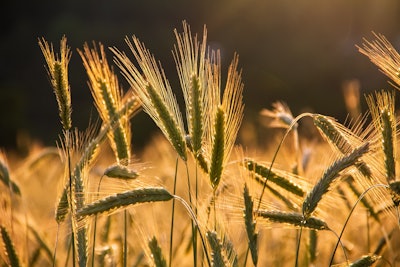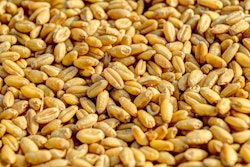
To address theimpacts of the war in Ukraineon the global agricultural sector, theFood and Agriculture Organization of the United Nations (FAO)has launched a new $17 million project to help Ukrainian farmers save the upcoming harvest in July-August while ensuring export of critical agricultural goods to international markets.
Funded by Japan and implemented jointly with theMinistry of Agrarian Policy and Food of Ukraine, the project aims torestore grain storage capacity and functionalityof supply chains from harvest to export as well as maintain productive capacity of Ukrainian farmers to enable continued future productions.
“乌克兰的农民正在喂自己,communities and millions more people around the world," said Rein Paulsen, Director of the FAO Office of Emergencies and Resilience.
"Ensuring they can continue production, safely store and access alternative markets to sell their produce is vital to secure food availability, protect livelihoods, strengthen food security within Ukraine and ensure other import-dependent countries have a steady and sufficient supply of grain at a manageable cost."
Millions of tonnes of grain waiting for export
Ukraine is one of the top-five global grain exporters, supplying more than 45 million tonnes of grain yearly to the global market.
According to the Ministry of Agrarian Policy and Food of Ukraine, due to theblockage of Black Sea ports, the country still has 18 million tonnes of last year’s cereals and oilseeds harvest in stores waiting for export.
Alternative rail and river routes cannot make up for the lost exports through maritime transportation and bottlenecks along new, potential supply chains that have yet to be resolved.
This season Ukraine is expecting to harvest up to 60 million tonnes of grain. But the lack of export does not allow for the opening of available storage space for the new harvest, since 30% of the available capacity of granaries still remain filled with last year’s harvest.
“Within the new Japan-funded project, FAO will address storage deficit by providing the polyethylene grain sleeves, grain loading and unloading machinery to the smallholders and a variety of modular storage containers to the medium-sized producers and associations," said Pierre Vauthier, Head of FAO Ukraine Country Office.
"Support will be provided to the farmers from ten oblasts of Ukraine: in the east, center, south and north of the country."
In addition, the project will provide technical support to the government to operationalize alternative transport routes for grain export and foster the rapid expansion of technical capacity of the Izmail laboratory.
The facility will enable farmers to meet international standards including veterinary and food safety testing and certification.
Global support to Ukraine
FAO has been operating in Ukraine since 2003 and since 2015 focused its activities on emergency support and development projects.
Following the start of the war, the organization has developed and updated its Rapid Response Plan, calling for $115.4 million in funding to provide support to almost 980 000 small farmers and medium-sized producers through December 2022.
As of June 29, FAO has already supported over 75,000 people with emergency agricultural support including distribution of seed potatoes and vegetable seeds and multipurpose cash assistance. An additional 44,000 people will be supported in the coming weeks to produce vegetables, cereal crops, milk, meat and eggs to feed themselves.
This is the second time Japan has contributed to fund FAO’s Humanitarian Response Programme in Ukraine followed by its first contribution in April 2022, adding up to a total of $20 million.
To date, with the additional funds from Japan, FAO has raised $30.4 million. The financial support has been also provided by Australia, Belgium, the CERF Rapid Response, the European Union, France, the Louis Dreyfus Foundation, Ukraine Humanitarian Fund and USAID’s Bureau for Humanitarian Assistance (BHA).
With more contributions, FAO would be able to reach more people to bolster food production and improve the food security situation in the country.
Facts and figures:
- 2021年,36岁的55 countries with food crises depended on Ukraine and Russian exports for more than 10% of their total wheat imports, while some obtained almost the entirety of their wheat imports from Ukraine and the Russian Federation.
- According to the Ministry of Agrarian Policy and Food, export volumes for grains are normally at 6 million tonnes per month, whereas in 2022, only 322 000 tonnes in March, 970 000 tonnes in April, 1.2 million tonnes in May, and over 1 million tonnes in June have been exported.
- 根据国家统计Ukrai服务ne, as of 1 January 2022, the total storage capacity in the country was 75 million tonnes. Considering areas directly affected by war, only 60.9 million tonnes of storage capacity are currently available.
- As of 2 June, 14.2 million ha have been planted with spring crops – 19.4% less than last year, according to the Ministry of Agrarian Policy and Food of Ukraine
- Some 25% of crop producers lack the plant protection products they require.
- Household and commercial producers cannot access sufficient fuel for agricultural production and transportation. This lack of fuel availability may affect the July/August harvest of winter crops.
- Agricultural input prices are spiking, with an average increase of 40% to 45% in the price of seed, plant protection agents, fertilizers and fuel. In the upcoming seasons, producers may determine that standing crops are not profitable to harvest.





















